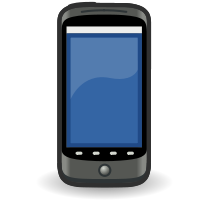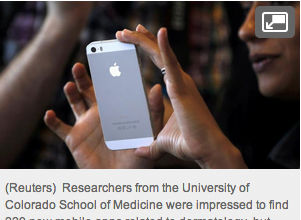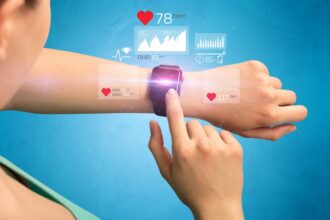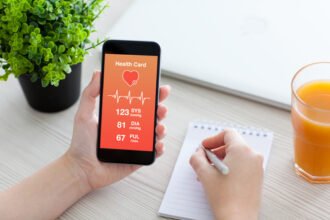Mobile technology will be key in delivering the aims of the Scottish e-Health strategy and the service transformation agenda of NHS Scotland, explains Colin Reid, chief executive of TotalMobile.
Mobile technology will be key in delivering the aims of the Scottish e-Health strategy and the service transformation agenda of NHS Scotland, explains Colin Reid, chief executive of TotalMobile.
Both the new Scottish eHealth strategy and a range of service transformation projects and initiatives in Scotland are being driven by the need for health boards to do more with less. More people are now living with long-term conditions than ever before – around two million people in Scotland, or 40% of the population – and the number is rising.
Meanwhile, new treatments and medicines have led to healthcare expenditure constantly outstripping GDP growth in almost every developed country over the past 60 years, including Scotland. At the same time, there is a renewed focus on improving patient safety and outcomes, following publication of the Healthcare Quality Strategy for NHSScotland and concern about the high numbers of significant adverse events being reported.
To respond to these challenges, the new eHealth strategy is calling on health boards to develop IT systems that: make working practices more efficient; deliver cost savings; improve care integration and provide staff with better access to the information they need to do their jobs and deliver better, safer care.
There’s also a strong focus on ensuring healthcare professionals, especially nurses, have more time to spend with patients, through initiatives such as Releasing Time To Care.
Mobilising the entire job
How can today’s mobile technology make a difference? Put simply, by giving staff the right information and tools  to do their job, in any place, at any time.
to do their job, in any place, at any time.
Of course, many staff are already ‘mobile workers’, moving between wards and outpatient clinics on different sites or treating patients at home or in GP surgeries. Yet current approaches to mobile working are often highly inefficient. What health boards need to do is to ‘mobilise’ each healthcare professional’s entire job, using the latest generation of mobile solutions. These overcome issues of limited and clumsy web-based access to existing back-office systems by providing native smartphone and tablet apps that draw together the information and tools staff need to support them as they work.
No unnecessary visits ‘back to base’
If we look at the typical working day of a community nurse, we can see how it will change when mobile technology is used to mobilise their entire job.
Using traditional IT solutions, a community nurse will typically begin their day by travelling to their ‘base’ at a hospital health centre for a team meeting and to plan their day’s schedule. Then they need to make sure they have gathered all the patient records and other documents they will need during the day, before finally heading out for their first visit.
With the latest generation of mobile solutions to support them, the nurse does not need to travel to the office. They can simply log on to an app on their smartphone from home and get access to all the information they need for the day’s visits, from lists of appointments and tasks to comprehensive electronic patient records, including results, photographs and x-rays. They have saved both time and the cost of an unnecessary journey in to the office thanks to a smartphone app.
Patient records at your fingertips
Maybe it’s the nurse’s first visit to this patient. Traditionally, they will dig out a map, wrestle with a personal Satellite Navigation, or have to stop and ask for directions. The smartphone app shows the location of the next visit and works out the best route for all visits for the day reducing carbon footprint and maximising travel time.
Then, while they are with the patient, they will need to keep a record of any care given, chart any readings and note any other changes in the patient’s condition. With the traditional approach, they would have two options: they might take notes on paper, which would need to be entered into the records later, taking more of their time away from patient care – and probably requiring another trip to their ‘base’. Or they might boot up their laptop and key in the data there and then, a process that healthcare professionals report often puts a barrier between them and patients.
With an app-based solution, however, our nurses can capture all the information they need with a few taps on their smartphone’s touchscreen, whilst still talking naturally with patients and their carers. They can even snap a photograph of the current state of a wound for example that can be immediately added to the patient record.
With the right mobile technology, they also do not have to worry about whether or not they have a signal, or about driving around until they find one: they can enter the data while they are still with the patient, even if they do not have a signal, confident the information will be synched automatically when their smartphone next connects. There is certainly no need to return to the office at midday or the end of the day to update records and complete paperwork. Even their mileage, expenses or requests for supplies can be entered through the app.
Increase contact activity and time with patients
Using mobile solutions to cut out unnecessary travel and streamline accessing and updating patient records can increase both contact activity and time spent with patients considerably. It can also reduce time spent travelling by 33%, according to participants in the Department of Health’s recent National Mobile Health Worker Project. Eliminating unnecessary journeys will also help staff cut their ‘carbon footprint’, helping health boards meet the Health Improvement, Efficiency, Access to Services and Treatment (HEAT) target to reduce carbon emissions and energy consumption.
It is not just community-based staff who will benefit however: app-based mobile solutions can also support doctors, nurses and therapists in hospital settings as they move from bed to bed or between wards and clinics. Giving them fast, easy access to the right information and tools when and where they need it will help them work more efficiently and deliver safer care.
In short, health boards that are serious about implementing the objectives of the Scottish eHealth strategy and initiatives such as Releasing Time To Care need to look urgently at providing staff with new mobile solutions, helping to mobilise and support them in their entire role.
To read other posts in this exclusive ongoing series, please visit the Mobile Health Around the Globe main page. And if you have a Mobile Health Around the Globe story to tell, please post a comment below or email me at joan@socialmediatoday.com Thanks!








